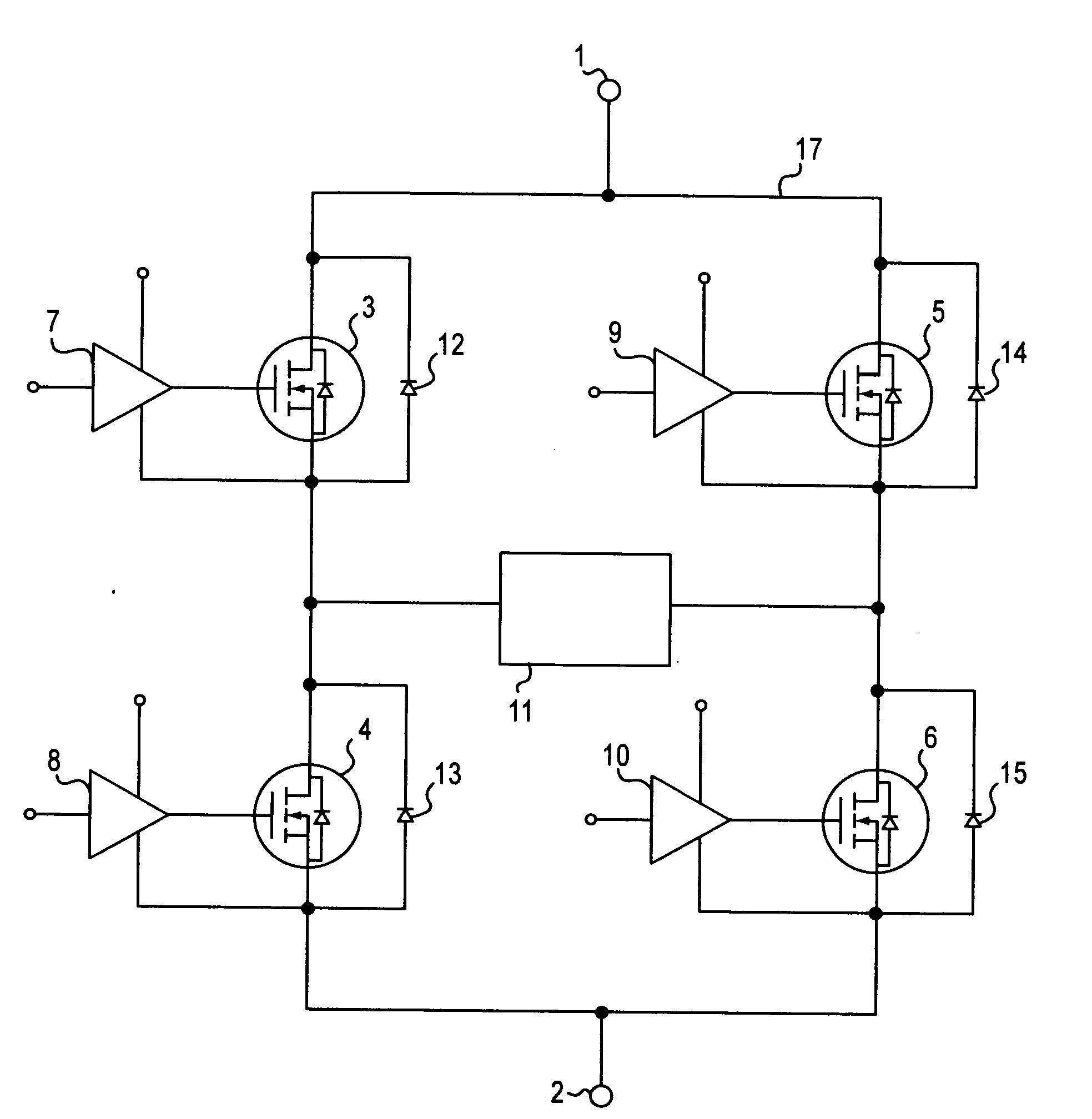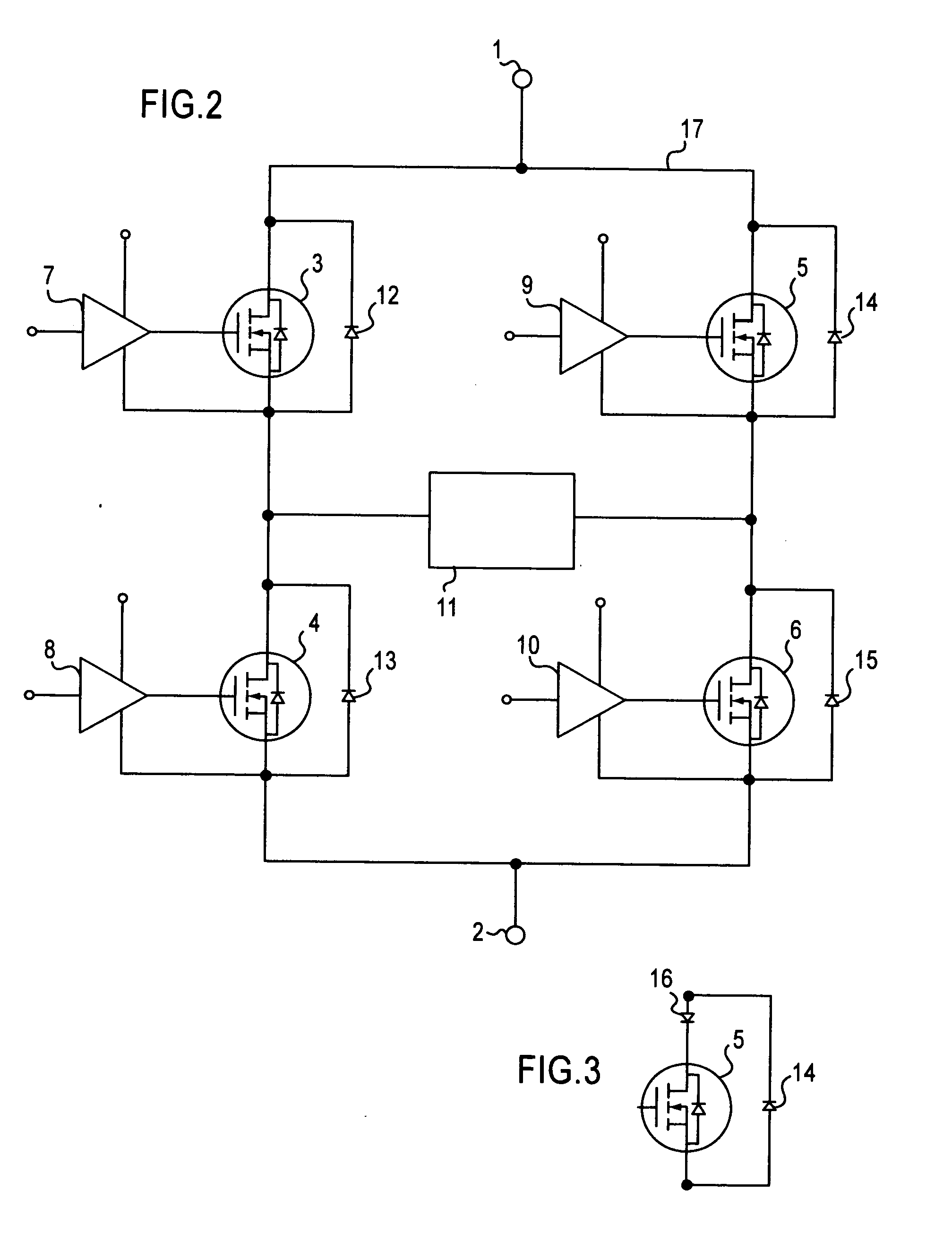H-bridge pulse generator
a pulse generator and hbridge technology, applied in the direction of mechanical vibration separation, process and machine control, instruments, etc., can solve the problems of circuit drawbacks without freewheeling diodes, further limitations in performance of shown circuits, etc., to achieve wide frequency response, increase efficiency, and increase output power
- Summary
- Abstract
- Description
- Claims
- Application Information
AI Technical Summary
Benefits of technology
Problems solved by technology
Method used
Image
Examples
Embodiment Construction
[0029]FIG. 1 shows a push pull topology typically used in an EMAT. This circuit provides a tone burst of current consisting of a specified number of cycles in an EMAT transmitter coil. The operation is for switch Q1 to be turned on for period of time and then switched off for a period of time, followed by the switching on for Q2 for the same period of time to avoid saturation of the transformer and then the Q2 is switched off at the end of the cycle. This operation produces a square wave output which can be transformed to the voltage required to drive the EMAT and its timing components. The use of the transformer however limits the range of frequencies for which sufficient drive current can be produced. Parasitic components such as stray capacitance and leakage inductance associated with the transformer can also consume power and limit the current that would otherwise be delivered to the EMAT. If the transformer is pulsed in a pattern other than a symmetric tone burst, it can limit ...
PUM
 Login to View More
Login to View More Abstract
Description
Claims
Application Information
 Login to View More
Login to View More - R&D
- Intellectual Property
- Life Sciences
- Materials
- Tech Scout
- Unparalleled Data Quality
- Higher Quality Content
- 60% Fewer Hallucinations
Browse by: Latest US Patents, China's latest patents, Technical Efficacy Thesaurus, Application Domain, Technology Topic, Popular Technical Reports.
© 2025 PatSnap. All rights reserved.Legal|Privacy policy|Modern Slavery Act Transparency Statement|Sitemap|About US| Contact US: help@patsnap.com



